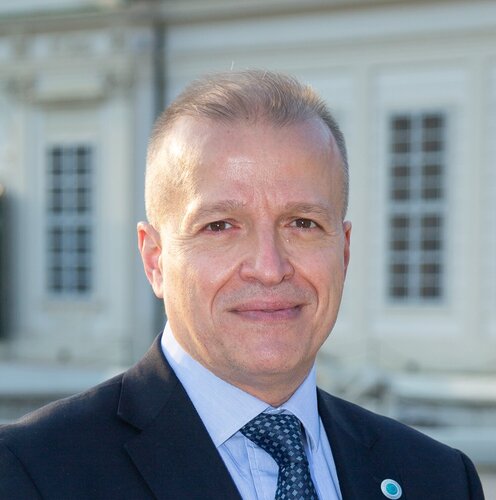
With a longstanding commitment to the EFP and a deep understanding of its inner workings, Professor Andreas Stavropoulos has taken on the role of treasurer at a pivotal time for the federation. In this interview, he shares his motivation, outlines the financial challenges and opportunities ahead, and explains how strategic planning and transparency will be key to supporting the EFP’s future growth.
Question. Andreas, after having served the EFP in many capacities, what motivated you to take on the role of treasurer, and how does your background prepare you for this important responsibility?
Andreas Stavropoulos. Taking on the treasurer role felt like a natural next step after my years of involvement in the EFP executive committee. Having served in various positions, including as EFP president, I’ve been part of the core leadership team for many years. The role of treasurer is crucial, it’s about ensuring the financial health of the federation, without which we simply can’t operate. It's a three-year term, and a big responsibility to ensure stability, growth and to strengthen the federation’s financial foundations, especially in the current volatile times.
Q. Financial sustainability is a key priority for the EFP. What do you see as the main financial challenges and opportunities for the federation in the coming years?
AS. Our main sources of income are the EuroPerio congress and industry partnerships, both of which are essential and must continue to function well. As chair of EuroPerio12, I wear a double hat, which gives me a vested interest in the congress’s financial success.
In recent years we have seen major and established congresses having great difficulty to attract large numbers of participants, as well as a decline in industry sponsorship. EuroPerio needs to continuously improve and innovate, to meet both the needs of the delegates, but also of the industry partners and exhibitors. We recently initiated a round of EuroPerio11 debriefing meetings with the EFP partners to listen to their feedback, wishes and suggestions for the future. In this respect, EFP member societies, especially those with a large membership, must actively promote EuroPerio and ensure large participation of their own members and beyond. After all, a financially successful EuroPerio benefits national societies that share part of the profits proportionally, according to the number of participating members.
Q. Transparency and accountability are essential in managing members’ and partners’ trust. How do you plan to ensure clarity and openness in the EFP’s financial operations?
AS. Transparency is non-negotiable. We already provide annual financial reports to our members, which are shared before the General Assembly and made publicly available. Our accounts are audited externally by a professional company to ensure compliance and clarity.
With our partners, everything is outlined clearly in contracts: conditions, benefits, and rights are all standardised. We have recently strived to apply the same rules and benefits to everyone, which is key to maintaining fairness and long-term trust.
Q. Diversifying revenue streams is often discussed in non-profit organisations. Are there new avenues the EFP is exploring to reduce reliance on traditional sources of funding and how do you balance maintaining a safe financial position with the need to invest in strategic areas like education and public awareness?
AS. We need sustainable sources that can support ongoing projects and allow us to grow gradually without taking on high financial risks. As I said, we live in financially volatile times, so yes, we’re looking seriously into new ways of diversifying our income. The EFP has established successful formalised post-graduate education programmes. But there’s also a clear opportunity to develop the third pillar of education: continuing professional development. We’ve already begun exploring this possibility. Strategic investments are important, and education is always a top priority for the EFP; rather than duplicating efforts, we may consider meaningful collaborations. This would allow us to combine financial resources and capabilities for greater reach.
It’s important to move beyond a model that depends so heavily on one major event and a few key partners. It’s about taking things step by step. As a rule of thumb, we must ensure that new projects and investment are backed by secure funding and that we maintain healthy financial margins. After all, we represent national societies, and in principle, this is their money. We have to be extremely careful and conservative in how we deal with expenditures.
Q. How can financial planning support the successful implementation of the EFP’s new Vision 2030 strategy and how, in your opinion, can the role of treasurer go beyond numbers to contribute to the broader success of the EFP?
AS. While we haven’t yet mapped out a financial plan specific to Vision 2030, the principles remain the same: careful planning, measured investment, and strong financial governance will be essential to achieving our goals. The treasurer plays a part in this by ensuring we don’t overextend and that each initiative is financially viable. As mentioned in the beginning of our discussion, the treasurer is a full member of the executive committee and is part of all major decisions about the federation’s future. This role isn’t just about managing accounts, it’s about contributing to the strategic direction of the EFP. The treasurer has one vote out of seven, just like the rest in the group. The Executive Committee has a shared responsibility, and I see my role as helping to steer us toward sustainable growth and long-term impact.




